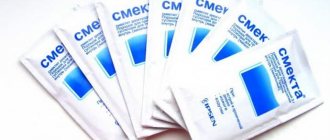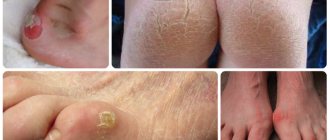Why does inflammation of the clitoris occur in girls and women?
Several factors contribute to the development of the disease: constant humidity and warm conditions in which the genitals are located; a large number of nerve endings, plexuses of blood vessels, delicate skin, folds of skin.
The main reasons for the development of vulvitis:
- Infections: staphylococci, streptococci, enterococci, fungi, E. coli, etc. These provoke nonspecific vulvitis. Gonococci, chlamydia, viruses, trichomonas, diphtheria bacilli, tuberculous mycobacteria cause specific vulvitis;
- Oral sex (due to infection);
- Long-term antibiotic therapy, taking hormonal drugs, immunosuppressants. The listed medications upset the balance of microflora, provoking dysbacteriosis, which, in turn, can manifest itself in the form of genital candidiasis, including candidal vulvitis;
- Diabetes mellitus, leukemia, the presence of malignant tumors;
- Oncological diseases of the vagina, cervix and body of the uterus, ovaries at the stage of necrosis and decay;
- Inflammatory diseases of the genital area: vaginitis, endometritis, endocervicitis, pyosalpix;
- Urethritis or cystitis;
- Urinary incontinence;
Urogenital fistulas;
- Helminthiases;
- Allergic reaction to cosmetic, hygiene and perfume products;
- Chemical exposure: douching with antiseptic solutions, skin irritation with chemicals (eg gas, industrial dust);
- Thermal factors: hot baths, douching with hot solutions;
- Failure to comply with personal hygiene rules;
- Wet conditions: swimming, wearing a swimsuit for long periods of time.
Is it possible to get inflammation from masturbation of the clitoris and genitals in general?
It is worth noting that it is quite possible to provoke the development of the disease using this method. The fact is that it can also occur for mechanical reasons, for example, during horseback riding, cycling, etc. That is, inflammation can easily occur during masturbation, especially if it was done with unwashed hands.
In addition, doctors say that one of the provoking factors is low levels of estrogen in the body. Normally, this condition is observed in childhood and adolescence, as well as after menopause.
Signs of inflammation of the clitoris (vulvitis) in girls and women
- Redness of the skin;
- Edema;
- Pain that increases with movement, urination, sex;
- Burning;
- Itching;
- The inner surface of the labia minora becomes rough due to enlarged sebaceous glands;
- With herpetic vulvitis, fluid-filled blisters appear on the surface of the genitals, which open, ulcerate and become crusted;
- Plaque may appear, particularly with diphtheria. Sometimes ulcers form. With fungal and candidal infections, psoriasiform plaques form;
- Body temperature may rise and general condition may worsen.
It is worth noting that in diabetes mellitus, inflammation of the perineum near the clitoris is primarily manifested by unbearable itching.
Inflammation of the clitoris can be primary or secondary depending on the cause. For example, women of reproductive age more often suffer from secondary diseases, which arise against the background of general diseases or pathologies of the reproductive system. In childhood, primary ones are more common. This is due to a tendency to exudative diathesis and helminthiasis.
Depending on the clinical course, vulvitis is classified into acute and chronic. The first are characterized by pronounced features. Signs of chronic inflammation are less noticeable, but increase significantly with relapse of the disease. In young children, inflammation can be complicated by the formation of adhesions between the labia minora (synechia).
Symptoms of the disease cause severe discomfort, especially itching, but you should not scratch the skin, as it can cause infection. To alleviate the symptoms of inflammation before visiting a doctor, you can take a warm (not hot) bath with a decoction of chamomile, calendula or string.
You need to wipe your genitals from front to back without rubbing the skin. They must always be kept dry and clean. You should not delay seeing a doctor, as the inflammation can spread to the vagina (vaginitis) and even the uterus and its appendages.
Diagnosis of symptoms of clitoral inflammation
The doctor listens to the patient’s complaints, asks about the onset of the disease, pathologies in the medical history and the presence of acute and chronic pathologies at the moment, and tolerability of medications.
The external genitalia are also examined, and a hand-held magnifying glass may be used; vaginal and rectal digital examination; collection of smears for cytological analysis for malignant cells, microscopy, bacteriological culture to obtain information about the causative agent of the disease and its sensitivity to antibiotics.
The doctor pays attention to the peripheral lymph nodes. If necessary, colposcopy of the surface of the vulva is performed. A stool test for the presence of helminths is required.
Differential diagnosis in girls and women
The clinical picture of vulvitis has similar features to a number of other pathologies, so the doctor must exclude them. For example, itching may indicate lice, scabies, psoriasis, limited neurodermatitis, seborrheic dermatitis, lichen sclerosus (kraurosis).
The above symptoms may indicate a precancerous condition or the cancer itself, plasmacellular vulvitis, which is accompanied by the appearance of red shiny plaques. If the causes cannot be determined, a biopsy is prescribed. The procedure is also used when treatment for 6 weeks has not yielded positive results.
Based on the above, we can conclude that vulvitis, although it is a visual disease, is sometimes quite difficult to diagnose; you may need to consult a therapist and a dermatovenerologist. If a sexually transmitted disease is detected, diagnostic tests are done to identify other similar infections.
How and with what to treat
Therapeutic measures for inflammation near the clitoris are related to the etiology of the pathological process. The key goal of treatment is to eliminate the causative factors. Patients do not require hospitalization or inpatient therapy; the doctor prescribes a regimen for taking medications at home at the appointment.
Compliance with hygiene requirements - standards depend on the source of the problem. If the disease is caused by allergic reactions to intimate soap, then the procedures are performed without it or with hypoallergenic analogues. Wearing panty liners is excluded; hygiene products must be replaced every three hours, combining them with washing. Synthetic underwear is prohibited, preference is given to cotton fabrics.
Antibacterial therapy is recommended when specific pathogens of clitoral inflammation are detected: Macmiror, Furazolidone, Nifuratel, Furacilin, Ketodin, Gravagin. At the same time, drugs are prescribed to increase the functionality of the immune system, multivitamin complexes: Alphabet, Complivit, Duovit, Vitrum, Centrum, Multi-Tabs, Dekaris, Kagocel, Viferon. Nonspecific infection is treated with Hexicon, Povidone-iodine, Polygynax.
Suppression of obsessive itching - if there is no effect from treatment with antibacterial agents, patients are prescribed antihistamines, in the form of tablets, ointments. Therapy is carried out with Suprastin, Fenkarol, Cetirizine.
Atrophic forms of vulvitis during menopause are treated with ointments with estrogen: Estriol, Dermestril, Divigel, Ortho-gynest, Ovestin. Hormonal agents are not used for bacterial inflammation of the clitoris.
Infection with herpes infection requires the use of antiviral drugs: Acyclovir, Valacyclovir, Famciclovir, Panavir, Virolex, Herpferon.
Bearing a fetus involves the use of only external medications. Antibacterial medications are prescribed from the second trimester of pregnancy - according to strict indications.
A major role in preventing inflammatory lesions of the intimate area is played by compliance with preventive measures: compliance with the requirements for daily hygienic treatment of the genitals, eliminating the influence of the causes of the development of the disease.
An inflamed clitoris requires urgent seeking professional help. Delay in treatment leads to the spread of the disease to the cervix, uterus and appendages, with the formation of endometritis, erosions on the mucous membranes, and subsequent infertility. During therapy, sexual intercourse is prohibited, and diagnostic testing of the partner is necessary. Gynecologists advise not to get carried away with traditional methods - most of them do not give the expected results.
Inflammation of the clitoris and other external genitalia is medically called vulvitis. The external genital organs also include the pubis, the labia majora and minora, the hymen/its remains, the vestibule of the vagina, two Bartholin glands, and the bulb (venous plexus).
Causes of burning in the genital area
There are many reasons that cause itching in the clitoral and labia areas. The most harmless of them is violation of the rules of intimate hygiene.
The vagina is populated by microorganisms - beneficial and opportunistic; they provide protection against infection and are in a certain balance, maintaining an acidic environment.
If this balance is disturbed, certain bacteria are activated, which leads to unpleasant sensations - bacterial vaginosis begins.
The balance can be disrupted by a lack of hygiene procedures and their excess. If the beneficial flora is washed out, its place is immediately taken by opportunistic microorganisms Gandarella and fungal flora - Candida.
Symptoms of candidiasis are an itching sensation on the labia and clitoris, and the appearance of a white coating. With gangarellosis, the amount of discharge increases, which can be transparent or grayish and have a mucous consistency. They smell characteristically of stale fish.
Vaginal dysbiosis can be provoked even by improper washing - if E. coli gets into the vagina, the microflora balance will be disrupted.
Nonspecific vaginosis
A stressful situation can cause vaginal dysbiosis. Strong experiences lower the immune status of the body, the balance of beneficial and opportunistic flora is disrupted. (This happens not only in the vagina, but also in the intestines)
The clitoris itches during an allergic reaction, which can be caused by:
- new hygiene products;
- the use of topical and general medications - especially if the active substance is excreted in the urine;
- wearing synthetic underwear;
- rough sanitary pads.
Atrophic vulvovaginitis
Itching and burning of the clitoris is experienced by women who have entered menopause. Estrogen levels decrease, the genital mucosa dries out, which is accompanied by unpleasant sensations.
When to see a doctor
Experts recommend visiting your local gynecologist immediately after signs of developing inflammation of the clitoris appear: itching and burning in the external genital area, painful sensations when urinating, foreign inclusions in vaginal discharge, redness, swelling of the mucous membrane of the labia minora.
Ignoring unpleasant symptoms and attempting self-medication will allow the pathological process to progress. Without determining the source of the lesion, any therapy will not have the desired effect and will lead to the formation of complications and the transition of inflammation to chronic forms.
What can cause the clitoris to itch?
Clitoral burning is caused by numerous factors, the influence of which leads to a feeling of acute discomfort in the genitals.
Among them are:
- State of pregnancy. Itching around the clitoris or inside it is typical for ladies who are “in an interesting position.” Why is this happening? The resulting burning sensation in the genital area develops against the background of hormonal changes occurring in the body of the expectant mother. Very often, there is an increase in secretion from the vagina, which can lead to the spread of pathogenic microorganisms throughout the external genitalia. What to do in this condition is best known by the doctor, who should be visited in case of these pathological manifestations.
- Beginning of the menstrual cycle. The causes of unbearable itching in the external genitalia are also associated with the beginning of a woman’s next menstrual cycle. This symptom does not accompany all representatives of the fair sex, but nevertheless occurs frequently. The clitoris, in which the itching and burning sensation progresses, may become enlarged, which is normal in this condition. The itching and burning that occurs in this situation are the result of the lady’s poor compliance with hygiene standards. If a woman washes her genitals irregularly during menstruation or forgets to change her underwear with a pad on time, clitoral itching is guaranteed! Against the background of menstrual discharge appearing on the surface of the external genitalia, conditions are created that are most favorable for the proliferation of most pathogenic bacteria. As a result of their active activity, the clitoris begins to itch.
- Manifestations of thrush. The causes of itching near the clitoris cannot but include damage to the female reproductive system by vulvovaginal candidiasis (thrush). This disease is diagnosed by a gynecologist after a preliminary examination of the female body. In this case, the clitoris may itch and swell. If the clitoris is swollen and increased in size, which can be detected independently by palpation of the organ, you should immediately contact the clinic. In addition to a burning sensation in the external genitalia, ladies may notice the appearance of a whitish-curdled coating on the clitoris. This plaque can also cover the vaginal vestibule, causing severe itching and stinking. By the way, the smell from the external genitalia with thrush is specific, reminiscent of the aroma of fermented milk products. It is through this that one can safely identify vulvovaginal candidiasis, which can only be treated by an experienced doctor using the necessary medications.
- Infectious process. The causes of clitoral itching include damage to the female body by a corresponding infection. This disease can be transmitted through sexual contact from an infected organism to a healthy one. A sexually transmitted infection can safely be considered a lesion of the body: chlamydia; mycoplasmosis; ureaplasmosis; trichomoniasis; gonorrhea.
- Allergy. A burning sensation in the clitoris also occurs due to the development of allergic reactions on the external genitalia. The latter may be a consequence of the use of certain hygiene products or underwear of dubious quality. The labia itch until one underwear is replaced with another that has a composition more favorable to the body.
- Development of genital herpes. The clitoris hurts and constantly itches due to the woman’s body being damaged by papillomavirus (genital herpes). The reasons for the development of this disease in the body are very different, but most often it begins to progress as a result of weakening immune properties.
Preparing for a visit to the gynecologist
So, we found out that if you experience itching in the intimate area and white discharge, you should immediately consult a doctor. But the visit must be preceded by preparation, which consists of fulfilling several simple requirements.
- A day or two before the visit, you should not use any medications in the form of sprays or suppositories.
- You should not urinate for at least two hours.
- It is also recommended to abstain from sex for one or two days.
- In the evening, on the eve of visiting the gynecologist, you need to wash yourself thoroughly with warm water, preferably using baby soap.
- Finally, for one or two days before treatment, you should refrain from using antibacterial hygiene products, the same applies to douching.
After the examination, the gynecologist will take a smear for microflora, culture for aerobic/anaerobic bacteria, fungi, and write a referral for PCR diagnostics. In addition, it is advisable to do a stool test for intestinal dysbiosis and worms (this will help in making an accurate diagnosis). In the absence of additional research, but only on the basis of complaints, the doctor simply will not be able to make a diagnosis.
What to do with clitoral itching?
Itching in the area of the outer labia is very unpleasant and causes women a lot of inconvenience. Therefore, many ladies dream of finding an effective way to combat these manifestations. For this purpose, many resort to traditional medicine, use popular medicines without a doctor’s prescription, or go to the hospital for help. Treatment of itching in the external genitalia is the responsibility of doctors, who, after finding out the true cause of the development of such manifestations, can find an effective and safe way to eliminate it. Self-medication in this situation is very dangerous, as it can lead to an exacerbation of an existing illness in the body.
First you need to visit a gynecologist. By examining the patient, palpating her and taking appropriate tests, the doctor will be able to identify the true cause of the itching in the clitoris. Naturally, during the examination, the gynecologist will “seat” the patient on the “examination chair”, so she should first take care of the hygienic condition of her external genitalia.
Treatment of itching in the clitoris is greatly simplified if the lady follows daily preventive standards. Banal washing of the female genital organs in the morning and evening hours significantly alleviates the patient’s condition. If necessary, the frequency of washing the genitals is increased to three or four times a day. At the same time, it is possible to rid the clitoral area of the accumulation of pathogenic microorganisms and vaginal discharge.
To avoid itching in the clitoris, you should wash your genitals using special hygiene products. It is best to purchase them at a pharmacy, as they sell drugs that are safe for intimate hygiene. When washing, you should use clean warm water without adding aromatic products. The latter can cause the development of unwanted allergic manifestations, which will only worsen the already “deplorable” female condition.
Ladies with sensitive skin should wear high-quality underwear made from natural fibers.
Ideally, things from:
- cotton;
- flax
These things can eliminate unpleasant itchy symptoms and significantly alleviate the lady’s condition.
When itching begins in the area of the external genitalia, it is possible to eliminate the unpleasant manifestations with the help of a solution of medicinal chamomile. You can prepare it yourself using dry parts of the plant and clean water. After cooling, the resulting solution can be used for washing, but in no case for douching. If you are allergic to chamomile, it is not recommended to use it for washing. In this case, it is best to treat burning in the external genitalia with the recommendations of the attending physician.
The main treatment for swelling and burning in the female genital area is carried out by a gynecologist after diagnosing the cause of the pain. Therefore, you should not allow the disease to progress, but consult a doctor about this problem as soon as possible. A timely visit by the patient to the antenatal clinic will significantly facilitate the treatment process and speed up recovery.
By the way, early treatment of this problem with a gynecologist will help stop the development of various gynecological diseases in the body. Therefore, you should not turn a blind eye to the existing symptoms of the disease, but go to a female doctor as soon as possible.
Prevention measures
To prevent clitoral soreness after sex, women should use lubricants during foreplay and intercourse. It is necessary to pay special attention to the hygiene of the external genitalia. You should not use soap when washing, only a special gel for intimate hygiene or clean water.
Knowing the provoking factors that can lead to discomfort and pain in the clitoris, it is necessary to avoid them. Basic preventive measures:
- avoid hypothermia;
- strengthen immunity;
- eat rationally;
- maintain a daily routine and rest schedule;
- lead an orderly sex life;
- exercise.
Causes
Long-term use of antibiotics and hormonal drugs can lead to inflammation of the clitoris. Under the influence of these agents, normal microorganisms die and are replaced by pathogenic flora. The inflammatory process develops quickly when taking drugs that suppress the immune system.
For the external genitalia, the development of dysbacteriosis is dangerous; in this case, restoration of normal flora will take a lot of time. The development of inflammation can occur much faster against the background of some concomitant diseases, such as diabetes, leukemia, and cancer of nearby organs.
Worms can cause inflammation of the clitoris. In some cases, the cause of inflammation may be an allergy to body care products. Frequent washing and douching can also cause the pathology. Especially if too hot solutions are used for douching.
Poor hygiene, including rarely changing underwear, are all factors that cause inflammatory processes. Wearing synthetic underwear for a long time can also cause inflammation. Many women are interested in whether it is possible to cause inflammation of the clitoris by mechanically acting on it?
Doctors say that this way of inflammation is quite possible. Even horseback riding and cycling can cause clitoral irritation and inflammation.
From this we can conclude that masturbation of the clitoris can lead to the development of an inflammatory process and it does not really matter whether your hands were washed before or not.
Children and adolescents, as well as women whose reproductive functions begin to decline, are most predisposed to the development of inflammatory processes on the external genitalia. This composition of the risk group is due to hormonal levels. In children, adolescents, and women during menopause, there is a very low level of estrogen in the blood and in the body as a whole.
Treatment
All treatment for clitoral inflammation is aimed at eliminating the symptoms of inflammation. In acute cases of the disease, the patient may be prescribed bed rest. During treatment, sexual intercourse is prohibited.
If there is an inflammatory process, you have to wash yourself up to three times a day. Decoctions of herbs and a solution of potassium permanganate will provide effective assistance. A chlorhexidine solution will help quickly relieve the symptoms of inflammation and reduce itching. If necessary, antibacterial drugs are prescribed in the form of gels and ointments.
The most popular cream is “Makmiror”. For the purpose of prevention, creams and ointments can also be administered into the vagina. At the same time, vitamins and drugs that enhance immunity can be prescribed.
You can restore the mucous membrane of the labia and speed up the healing of the clitoris after a herpetic lesion with the help of rosehip oil. The inflammation caused by the herpes virus itself is treated with antiviral drugs. For severe itching, antihistamines are prescribed, for example, Suprastin or Tavegil.
The treatment of atrophic changes in the clitoris and labia during menopause will be slightly different. In this case, hormonal drugs containing estrogens are prescribed. They can be prescribed both for local use and for general use. The choice of treatment in this case depends on the ultimate goal of treatment.
Prevention of clitoral inflammation is entirely based on compliance with the rules of genital hygiene. When washing, you must be careful not to injure the clitoris and labia minora.
Constant discomfort in the perineal area requires a visit to your local gynecologist. The pathological condition may be associated with inflammatory processes on the external genitalia; the body requires symptomatic treatment after determining the causes of their occurrence.
Symptoms
The first sign of inflammation is redness and swelling of the skin in the area of the labia and clitoris. There is some pain, which gets worse with urination and sex.
The inflammatory process is accompanied by itching and burning. The inner part of the labia minora, drawn into the inflammatory process, undergoes some changes. The labia minora on the inside become rougher than healthy tissue due to an increase in the number of sebaceous glands.
If the inflammatory process is caused by the herpes virus, then specific blisters, a characteristic sign of a herpetic rash, become clearly visible on the skin and the inside of the lips. If these blisters are opened, small ulcers form in their place. After some time, their surface becomes crusty.
If the inflammation is provoked by the causative agent of diphtheria, then plaque will appear on the inside of the labia minora and the clitoris. When the external genital organs are affected by fungi, cheesy plaques appear in the area of inflammation, similar to those that appear with thrush in the vagina.
With an inflammatory process on the labia minora and clitoris, the general state of health can significantly deteriorate, namely, the temperature rises and weakness appears.
If the patient suffers from diabetes, then the first symptom of inflammation of the clitoris will be unbearable itching. Doctors note that depending on the causes of infection, inflammation of the clitoris can be primary and secondary.
In women who are sexually active, inflammation of the clitoris is most often secondary, as it occurs against the background of infection of other parts of the reproductive system. In children and adolescents, inflammation of the clitoris is primary and occurs against the background of helminthiasis and allergic reactions. Diseases of the clitoris in children occur with an increase in temperature. A red clitoris is a clear sign of an incipient inflammatory process.
According to the clinical course, inflammation of the labia and diseases of the clitoris can be acute and chronic. The acute course occurs with pronounced symptoms. The chronic course is more blurred and less noticeable. The chronic manifestation of the disease becomes noticeable during the period of exacerbation. In advanced cases, adhesions may form between the clitoris and labia.
First aid
Treatment for inflammation of the clitoris should be prescribed by a doctor. What to do if the clitoris is swollen? If the clitoris is swollen after sex, then you can simply lubricate it with one of the anti-inflammatory ointments. The main problem of those suffering from inflammation of the clitoris is severe itching, which causes suffering.
However, doctors do not allow you to scratch the area of inflammation. Scratching wounds can become infected. You can relieve the painful itching for a short period of time if you wash the inflamed area with an infusion of chamomile or calendula. In this case, the infusion for treating the skin should be warm, but not hot.
Read more Scarlet blood on the first day of menstruation
When treating the genitals, you must follow the same principle as when washing. The stream of water or broth should come from the front. This must be done to prevent germs from the intestines from entering the vagina.
It is better not to delay contacting a doctor, as the inflammatory process can spread to other parts of the reproductive system. The next section that can become inflamed after the labia and clitoris is the vagina (vaginitis), then follows an ascending path - the cervix (cervicitis), uterus (endometritis), ovaries and fallopian tubes (adnexitis).
Diagnostics
Why does the clitoris swell and itch? The diagnosis of clitoral inflammation is made by visual examination. Clitoral hyperemia is an important symptom that suggests the presence of an inflammatory process.
For a more accurate diagnosis, a smear is taken, culture is taken, and microscopy is performed. The results of these tests are very important for treatment. They allow you to determine the sensitivity of the pathogen to certain types of antibiotics. Cytology is taken for preventive purposes so that oncology can be suspected in advance.
The doctor must pay attention to the condition of nearby lymph nodes. In severe inflammatory processes they are enlarged. Severe itching can be a symptom of other diseases, such as lice, scabies, neurodermatitis. During examination, they must be excluded from the number of possible diagnoses.
Vulvitis, which also includes inflammation of the clitoris, can at first glance be easily detected by visual inspection. In reality, it's not that simple. Many diseases can be accompanied by redness and swelling of the labia and clitoris.
Precancerous conditions and vulvar cancer itself may be accompanied by symptoms of vulvitis. If there is the slightest suspicion of the presence of cancer cells, a tissue biopsy is performed. This analysis is also given if the inflammatory process has not been eliminated within six weeks. To exclude sexually transmitted infections, special tests are performed to identify specific pathogens.
Homeopathic treatment of white plaque on the labia
To normalize the microflora of the female intimate area with thrush, the following drugs are recommended.
At different periods of life, a woman encounters such a phenomenon as a white coating on the labia. In the first weeks of life, newborn babies develop plaque; during puberty, teenage girls 11-14 years old experience light discharge; pregnant women experience this stage during hormonal changes in the body. Sexual life also leaves its mark on changes in a woman’s body: such a reaction occurs as a response to the foreign flora of the sexual partner. The ability to distinguish between normal physiological processes and pathological ones will help to avoid many problems.











